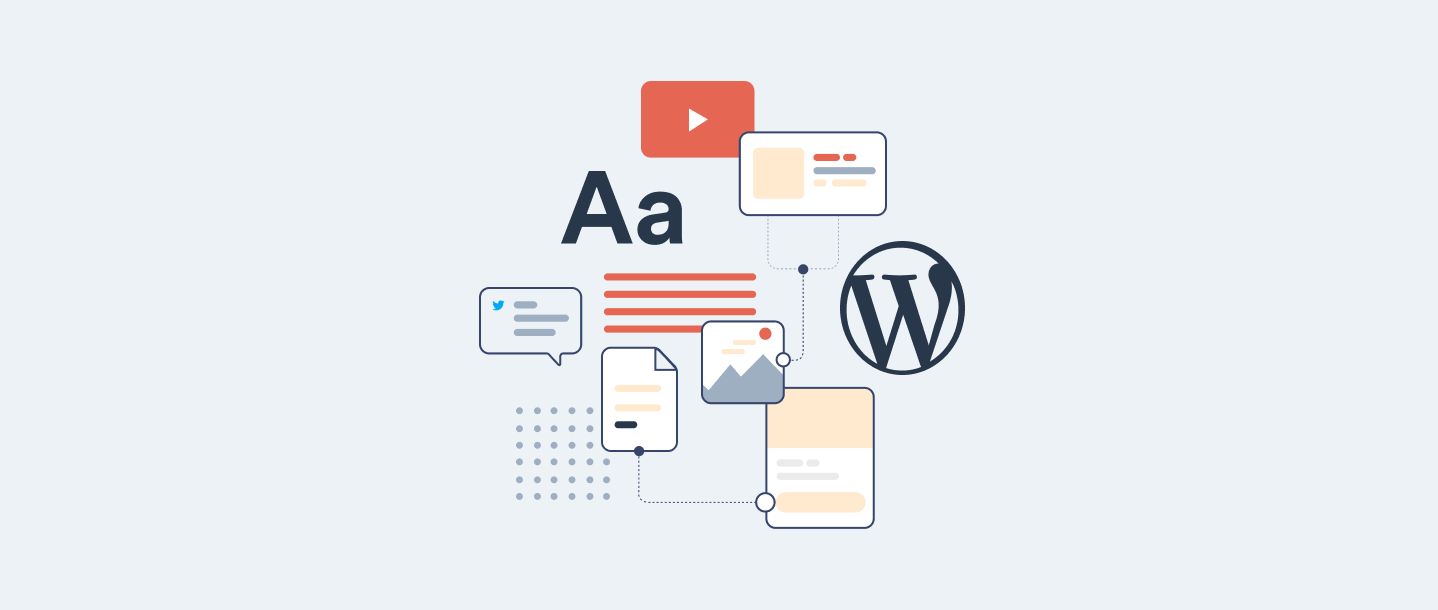At Big Bite we switched from the classic editor to the block editor back in 2018 when it was initially launched as the standalone Gutenberg plugin, and after quickly recognising its longer-term potential, we soon became the first agency in the world to use it to build an enterprise level project. Since then millions of others have got on board with blocks, however there are still some corners of the wider WordPress community that are yet to be converted, and their reluctance to use the editor is well documented across many blogs and discussion boards. Disgruntlement is also evident across WordPress Plugins reviews, where the Gutenberg plugin has an average rating of just two stars and has amassed comments such as “It is painful to work with”, “Worst user experience I have ever seen”, and “After four months fighting with it I don’t have a single positive thing to say.”
While many of the gripes can be written off as a general resistance to change, there also seems to be some myths and misunderstandings about what is and isn’t possible via the editor, so in this article we’re hoping to dispel a few misconceptions and outline some of the ways that blocks make life easier for our team and our clients.
Usability
When blocks became the default editing method as part of the WordPress 5.0 release – a key milestone in the broader Gutenberg project – it was a radical departure from the long-standing text editor. Unfortunately, the initial reception wasn’t great, with many users finding the new interface to be cumbersome, confusing, and riddled with issues, particularly around its drag and drop functionality. While the earlier versions of the editor definitely needed more work (as early versions often do), since then there have been very healthy improvements, and today the block editor is an intuitive tool that can be picked up pretty quickly.
At Big Bite, using blocks has made a significant difference to how easily our non-technical team members and clients can create new posts and pages within well-defined brand guidelines, saving a decent amount of time and engineering resources. This simply wasn’t possible with the classic editor, which relies on a level of CSS and HTML knowledge, and while there are other alternatives available such as Elementor or Visual Composer, in Big Bite’s experience the block editor has the commercial advantage. Largely this is due to the flexibility of the tool itself, which means we can customise the publishing experience to meet the specific user needs and production practices of enterprise organisations, therefore providing a long-term, scalable solution.
One of the sticking points of the block editor that can still impact usability today is the sheer volume of options, toolbars and controls which some users may find overwhelming or superfluous, however it’s possible to refine it to suit specific workflows – as we do for most of our clients – which results in a streamlined user journey. As standard, we also offer training to our clients to ensure they can make the most of the publishing ecosystems we produce on their behalf, however since the release of the block editor the sessions we deliver are much shorter, which is testament to its user-friendliness.
Compatibility
Another commonly cited issue with the block editor is a lack of compatibility with themes and plugins, which means that some users with existing WordPress websites are unable to move across to it without losing certain aspects of functionality and styling. Hesitancy to adopt a tool that will force you to redesign and rebuild your site is completely understandable, which is why it’s been confirmed that the classic editor will be supported for the foreseeable future, however this is a pretty short-term issue. Today there are already over 1,500 plugins available that have been specifically built for use with the block editor, and as it’s now the built-in solution, that arguably makes it the most compatible option available for everyone.
Fortunately at Big Bite, compatibility hasn’t been a problem for two key reasons. Firstly, we usually develop custom plugins for our clients rather than compromise on functionality, so our reliance on third parties is pretty low. Secondly, in the instances where we do use existing plugins for specialist areas such as payments or analytics, all of the providers we know and trust have already ensured that their solutions are Gutenberg-friendly. Plugins that are yet to be updated raise a red flag for us, as that suggests that the code may be outdated which can in turn cause security issues.
In terms of theme compatibility, all page builders are only agnostic for themes that have been specifically built to support them, so this isn’t really a Gutenberg issue. Having said that, as the majority of core blocks store generated mark-up in the database, most content should continue to display as intended even if you disable the block editor with a new theme.
Functionality
Everything you can do in the classic editor, you can do in the block editor, however with the latter you can also reuse blocks to save a lot of time and effort, and you can create custom blocks to produce media-rich, mobile responsive pages without heavily relying on plugins. The block editor also comes with an extensive API, plus additional features such as the ability to embed tables into content.
Although it’s fair to say that the block editor has fewer granular controls than the paid versions of some alternative page builders, from our perspective as an enterprise WordPress agency, that’s actually another win for Gutenberg. It’s our job to ensure that organisations can create posts and pages that are visually consistent with established design systems, so for Big Bite’s purposes the block editor provides a perfect balance of flexibility and uniformity.
As the built-in WordPress editor, it’s also being developed at a high velocity, with over 950 contributors to its codebase so far and extensive support from developers across the world, giving its roadmap a level of momentum that even the most well-funded software products would struggle to match.
Performance
Aside from ease of use for non-technical creators, one of the other major advantages of the block editor is that it offers optimal performance, particularly when compared to third-party page builders. Countless tests demonstrate that as the platform’s default editor, it achieves impressive scores across Google’s Core Web Vitals, which is a huge plus when it comes to end user experience and search engine rankings. In part, this can be attributed to the fact that it’s possible to only load resources required for the content blocks in use, rather than loading everything at once and slowing down page speeds.
It also creates clean, accessible mark-up instead of the bloated HTML generated by alternative options. Some popular page builders also store data in the database in opinionated ways, which can lead to issues later down the line if you want to migrate away from a plugin, making the block editor the much better future-proof solution.
Flexibility
Easily the biggest plus point for the block editor is that it gives us greater control and flexibility than ever before. No longer limited to just widgets, it’s now possible to easily create reusable components that form complete toolkits for our clients, enabling non-technical teams to self-build and publish on-brand content in a matter of moments.
While the allure of reusable blocks might not be as appealing to individual publishers building smaller sites (who still account for a significant proportion of the WordPress user base), as an agency it’s transformed what we do and how we do it. It also gives enterprise organisations the freedom to move away from bloated, bespoke CMS software without compromising on aesthetic and functionality, securing the platform’s position as a leading choice for large-scale brands and businesses.
Taking all of this into account, it’s clear that the block editor is not only a sizeable improvement, but also represents a hugely important gearshift for the WordPress platform. For users who have known and loved the classic editor for many years, it might take a little longer to adjust to an entirely different way of working, however for those willing to fully embrace the change, it opens up a whole new realm of publishing possibilities.


